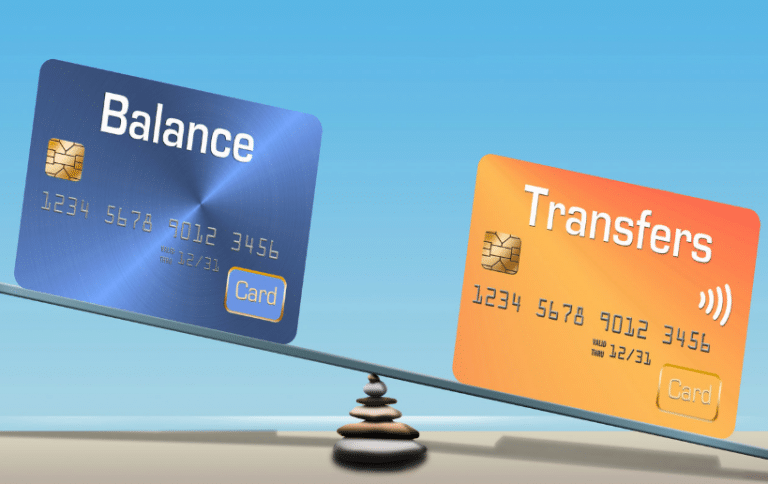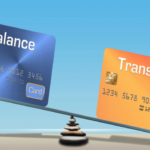
Credit cards transfer balance – Credit card balance transfers can be a powerful tool for managing debt, but they come with their own set of considerations. Understanding the ins and outs of balance transfers, including the potential benefits and risks, is crucial before making a decision.
This guide explores the concept of credit card balance transfers, outlining the process, key factors to consider, and strategies for maximizing their effectiveness. We’ll also delve into the potential consequences of balance transfers, ensuring you have a comprehensive understanding of this financial tool.
Understanding Credit Card Balance Transfers
Credit card balance transfers allow you to move outstanding balances from one credit card to another, often with a lower interest rate. This can be a valuable tool for saving money on interest charges and paying off debt faster.
Benefits of Credit Card Balance Transfers
Balance transfers can offer several advantages, helping you manage your debt more effectively.
- Lower Interest Rates: Transferring your balance to a card with a lower APR can significantly reduce the amount of interest you pay over time. This is especially beneficial if you have a high-interest credit card.
- Debt Consolidation: Consolidating multiple credit card balances into one can simplify your debt management. This makes it easier to track your payments and avoid missing deadlines.
- 0% Introductory APR: Some credit cards offer a promotional period with 0% APR on balance transfers. This allows you to pay down your debt without accruing interest for a specific timeframe, usually 12-18 months.
- Potential for Faster Debt Repayment: By lowering your interest rate, you can allocate more of your monthly payment towards the principal balance, leading to faster debt repayment.
Drawbacks and Risks of Balance Transfers
While balance transfers can be advantageous, it’s crucial to be aware of potential drawbacks and risks:
- Balance Transfer Fees: Most credit cards charge a fee for balance transfers, typically a percentage of the transferred amount. This fee can range from 3% to 5% and should be factored into your decision.
- Limited Time Offers: Introductory 0% APR periods are often temporary. Once the promotional period ends, the interest rate will revert to the card’s standard APR, which can be significantly higher.
- Credit Score Impact: Applying for a new credit card can temporarily lower your credit score, especially if you have several recent inquiries.
- Potential for Overspending: Having a lower interest rate may tempt you to spend more, potentially leading to further debt accumulation. It’s essential to maintain responsible spending habits.
How Balance Transfers Work

A balance transfer is a way to move debt from one credit card to another, typically to take advantage of a lower interest rate. This can help you save money on interest charges and pay off your debt faster.
The Process of Transferring a Balance, Credit cards transfer balance
To transfer a balance, you need to apply for a new credit card that offers balance transfer benefits. Once you’re approved, you can request a balance transfer from your existing card to the new one. The new card issuer will then pay off your old card’s balance, and you’ll start making payments to the new card.
Introductory APRs and Their Duration
Many balance transfer cards offer introductory APRs, which are lower interest rates for a set period of time. This can be a great way to save money on interest, but it’s important to remember that the introductory APR will eventually revert to a higher standard APR. The duration of the introductory APR can vary from a few months to a year or more.
Fees Involved in Balance Transfers
While balance transfers can be a useful tool for managing debt, it’s important to be aware of the fees involved. Most credit cards charge a balance transfer fee, which is typically a percentage of the amount you transfer. The fee can range from 3% to 5% of the balance transferred. Some cards also have a minimum transfer fee.
For example, if you transfer a balance of $5,000 and the balance transfer fee is 3%, you’ll be charged a fee of $150.
Finding the Right Balance Transfer Offer

Finding the best balance transfer credit card involves comparing different offers and understanding their terms. It’s important to look beyond the introductory 0% APR and consider the fees, eligibility requirements, and the length of the promotional period.
Comparing Balance Transfer Offers
To find the right balance transfer offer, it’s crucial to compare different credit cards based on several factors. Here are some key considerations:
- Introductory APR: The introductory APR is the interest rate you’ll pay for a specific period, typically 12 to 18 months. The lower the introductory APR, the less you’ll pay in interest during the promotional period.
- Balance Transfer Fee: This is a percentage of the amount you transfer, usually between 3% and 5%. A lower balance transfer fee means you’ll pay less to transfer your balance.
- Regular APR: This is the interest rate you’ll pay after the introductory period expires. A lower regular APR can help you save money on interest charges in the long run.
- Eligibility Criteria: Different credit cards have different eligibility requirements, such as credit score, income, and debt-to-income ratio. Make sure you meet the requirements before applying for a card.
Resources for Researching and Comparing Balance Transfer Offers
There are several resources available to help you research and compare balance transfer offers:
- Credit Card Comparison Websites: Websites like NerdWallet, Credit Karma, and Bankrate allow you to compare different credit card offers based on your specific needs and preferences. These websites often provide detailed information about APRs, fees, eligibility criteria, and other important factors.
- Credit Card Issuer Websites: You can also visit the websites of credit card issuers to learn more about their balance transfer offers. Many issuers have online tools that allow you to compare different cards and apply for a balance transfer.
- Financial Advisors: A financial advisor can provide personalized advice on finding the best balance transfer offer for your specific financial situation. They can help you compare different offers and make an informed decision.
Tip: When comparing balance transfer offers, consider the total cost of the transfer, including the balance transfer fee and the interest you’ll pay over the life of the loan.
Using Balance Transfers Strategically: Credit Cards Transfer Balance
Balance transfers can be a powerful tool for saving money on interest charges and getting out of debt faster. However, to maximize their benefits, you need to use them strategically. This involves understanding the nuances of different balance transfer offers and how to leverage them to your advantage.
Comparing Balance Transfer Approaches
There are several ways to approach balance transfers, each with its own advantages and disadvantages. Understanding these differences is crucial for choosing the strategy that best suits your financial situation.
Here’s a table comparing some common balance transfer approaches:
| Approach | Advantages | Disadvantages |
|—————————————-|—————————————————————————————————————————————–|———————————————————————————————————————————————————————————–|
| Single Large Transfer | Simplifies debt management by consolidating multiple balances into one, potentially lowering interest rates and making payments easier to track. | Requires a large lump sum to cover the transferred balance, potentially leaving you with less cash flow for other expenses. |
| Multiple Smaller Transfers | Allows for flexibility in managing debt, as you can transfer balances in smaller chunks, potentially reducing the impact on your available credit. | May result in multiple introductory periods, requiring careful tracking to ensure you take advantage of the lowest interest rates. |
| Transferring Only High-Interest Debt| Focuses on reducing the most expensive debt first, potentially saving significant amounts in interest charges. | May leave other debts with higher interest rates, potentially offsetting the savings from the transferred balance. |
| Transferring Only a Portion of Debt| Allows for a gradual approach to debt reduction, minimizing the impact on your credit utilization ratio. | May result in a longer repayment period and potentially higher overall interest charges if the remaining balance is not paid off quickly enough. |
Important Note: Before transferring a balance, carefully consider the terms of the new card, including the introductory period, interest rate after the introductory period, and any transfer fees.
Considerations Before Transferring
Before you dive into a balance transfer, it’s crucial to carefully consider your financial situation and the potential implications of this move. A balance transfer can be a powerful tool for saving money on interest, but it’s not always the best solution for everyone.
Assessing Your Credit Score
Your credit score plays a significant role in determining your eligibility for a balance transfer and the interest rate you’ll receive. A higher credit score generally translates to more favorable terms, including lower interest rates and potentially higher transfer limits. Before applying for a balance transfer, review your credit score and consider taking steps to improve it if necessary. This could involve paying down existing debt, keeping your credit utilization low, and making payments on time.
Evaluating Your Debt-to-Income Ratio
Your debt-to-income ratio (DTI) represents the percentage of your monthly income that goes towards debt payments. A high DTI can negatively impact your chances of getting approved for a balance transfer or securing a low interest rate. To calculate your DTI, divide your total monthly debt payments by your gross monthly income. Aim for a DTI below 36% for better creditworthiness.
Understanding Your Spending Habits
Your spending habits can influence the effectiveness of a balance transfer. If you’re prone to accumulating new debt quickly, a balance transfer might not be the most effective strategy. It’s essential to develop a plan to manage your spending and avoid racking up new debt after transferring your balance. This could involve creating a budget, using cash instead of credit cards, and tracking your expenses.
Checklist for Balance Transfer
- Review your credit score and ensure it’s within a favorable range for balance transfer offers.
- Calculate your debt-to-income ratio and strive for a DTI below 36%.
- Analyze your spending habits and identify areas where you can reduce spending.
- Compare balance transfer offers from different lenders to find the best terms.
- Consider the transfer fee and any potential introductory interest rate period.
- Ensure you have a plan to pay off the transferred balance within the introductory period.
- Avoid making new purchases on the transferred card during the introductory period.
Potential Consequences of Balance Transfers

While balance transfers can be a valuable tool for managing debt, it’s essential to understand the potential drawbacks and risks associated with them. These risks can significantly impact your financial well-being if not carefully considered.
Higher Interest Rates After the Introductory Period
Balance transfers often come with an introductory period, typically 0% APR, which can be a significant advantage for saving on interest charges. However, this introductory period is usually temporary, and after it ends, the interest rate can jump to a much higher rate, sometimes even exceeding the rate on your original credit card. This sudden increase in interest can quickly offset any savings you gained during the introductory period and make your debt more expensive to manage.
Impact on Credit Utilization and Credit Score
Balance transfers can affect your credit utilization ratio, which is the percentage of available credit you are using. When you transfer a balance, the amount of available credit on your new card decreases, while the amount of credit you are using remains the same. This can lead to a higher credit utilization ratio, which can negatively impact your credit score.
A high credit utilization ratio can signal to lenders that you are heavily reliant on credit, increasing the risk of defaulting on your loans.
Impact on Financial Stability
Balance transfers can create a false sense of security, leading to overspending and potentially worsening your financial situation. For example, if you transfer a balance to a card with a lower introductory rate but fail to make significant payments during that period, you may find yourself with a much larger debt to repay when the interest rate increases. This can strain your budget and negatively impact your financial stability.
Summary
By carefully weighing the benefits and risks, and strategically using balance transfers, you can potentially save money on interest and reduce your overall debt burden. However, remember that balance transfers are not a quick fix for financial problems. It’s essential to have a plan in place to pay down the transferred balance within the introductory period to avoid higher interest rates and potential financial strain.
Questions Often Asked
How long do introductory APRs typically last?
Introductory APRs for balance transfers typically last for 6 to 18 months, but this can vary depending on the credit card issuer.
What happens after the introductory APR period ends?
Once the introductory period ends, the interest rate on the transferred balance will revert to the card’s standard APR, which can be significantly higher.
Can I transfer my entire balance?
Most credit card issuers have limits on the amount you can transfer, typically around 80-90% of your available credit limit on the new card.





